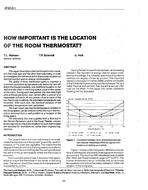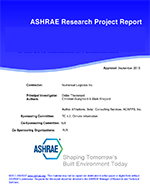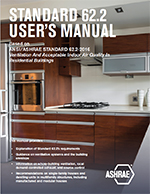Click here to purchase
VRF (Variable Refrigerant Flow) systems vary the refrigerant flow to meet the dynamic zone cooling and heating loads, leading to more efficient operations during part-load conditions. VRF systems have minimal or no air duct, which also contributes to reduce heat losses. This paper introduces a new model to simulate the energy performance of VRF systems in heat pump operation mode (cooling or heating but not simultaneously). The main features of the new model include (1) introducing separate curves for capacities and power inputs of indoor and outdoor units instead of overall curves for the entire system, (2) allowing variable evaporating and condensing temperatures in the indoor and outdoor units, and (3) introducing variable fan speeds based on the temperature and zone load in the indoor unit. These features enhance the accuracy of the estimation of VRF system performance in both heating and cooling modes, especially during low part load operations. Another new feature is a physics model to calculate pressure and thermal losses in the refrigerant piping network which varies with the refrigerant flow rate, operational conditions, pipe length, and pipe and insulation materials instead of a simple correction factor. The new VRF model enables the potential simulation of demand response of VRF systems by directly slowing down the speed of compressors in the outdoor units with invertor technology. This paper describes the new VRF algorithm development, the model implementation in EnergyPlus (“the simulation program” thereafter), and the model validation. For model validation, field tests were performed in a typical California house and actual performance data of VRF system was collected. The energy consumption of the installed VRF system was simulated using the new VRF model in the simulation program. The comparison of the simulated and measured energy use of the VRF system showed a reasonable match under the criteria of ASHRAE Guideline 14. This demonstrates that the new VRF model can accurately represent the actual performance of the VRF systems. Lessons learned from the model development, calibration, and validation are discussed. The research outcomes and the new VRF model in the simulation program can improve the accuracy of simulation of VRF system performance, which can support code compliance credits toward the use of VRF systems as well as utility incentive programs for VRF technologies.
Citation: 2016 Winter Conference, Orlando, FL, Conference Papers
Product Details
- Published:
- 2016
- Number of Pages:
- 8
- Units of Measure:
- Dual
- File Size:
- 1 file , 2.2 MB
- Product Code(s):
- D-OR-16-C063


